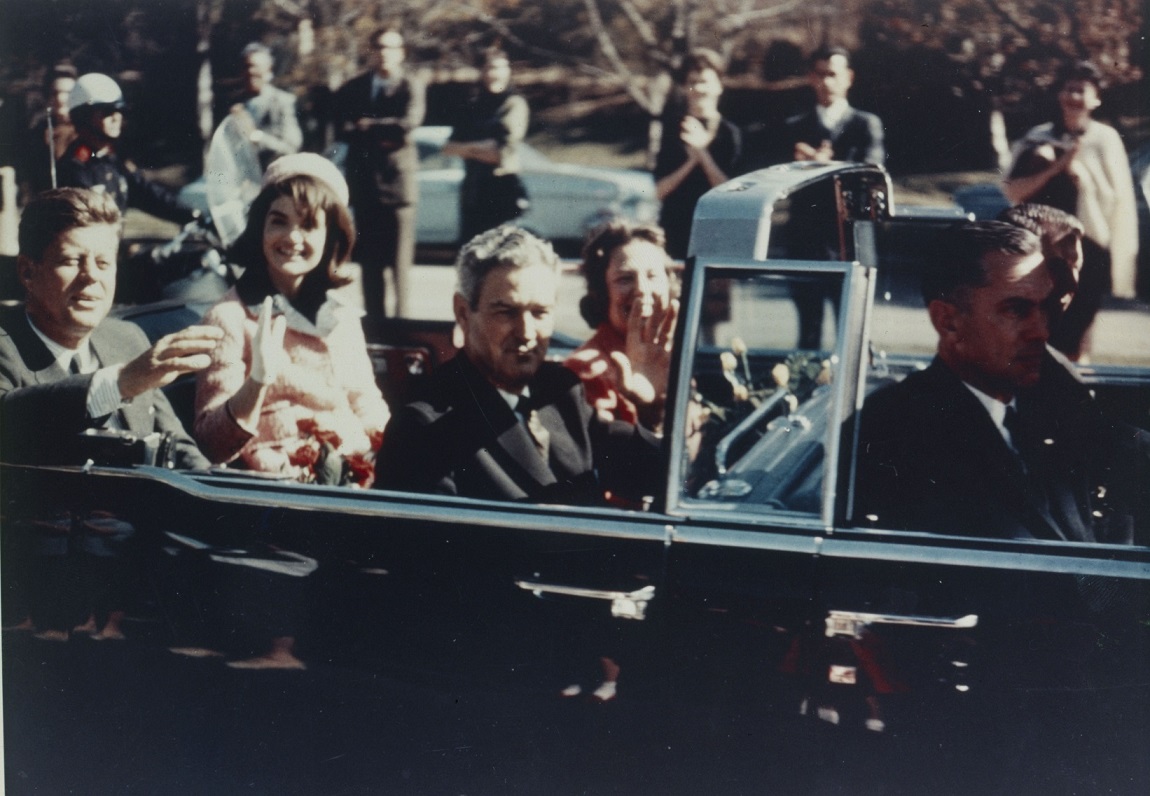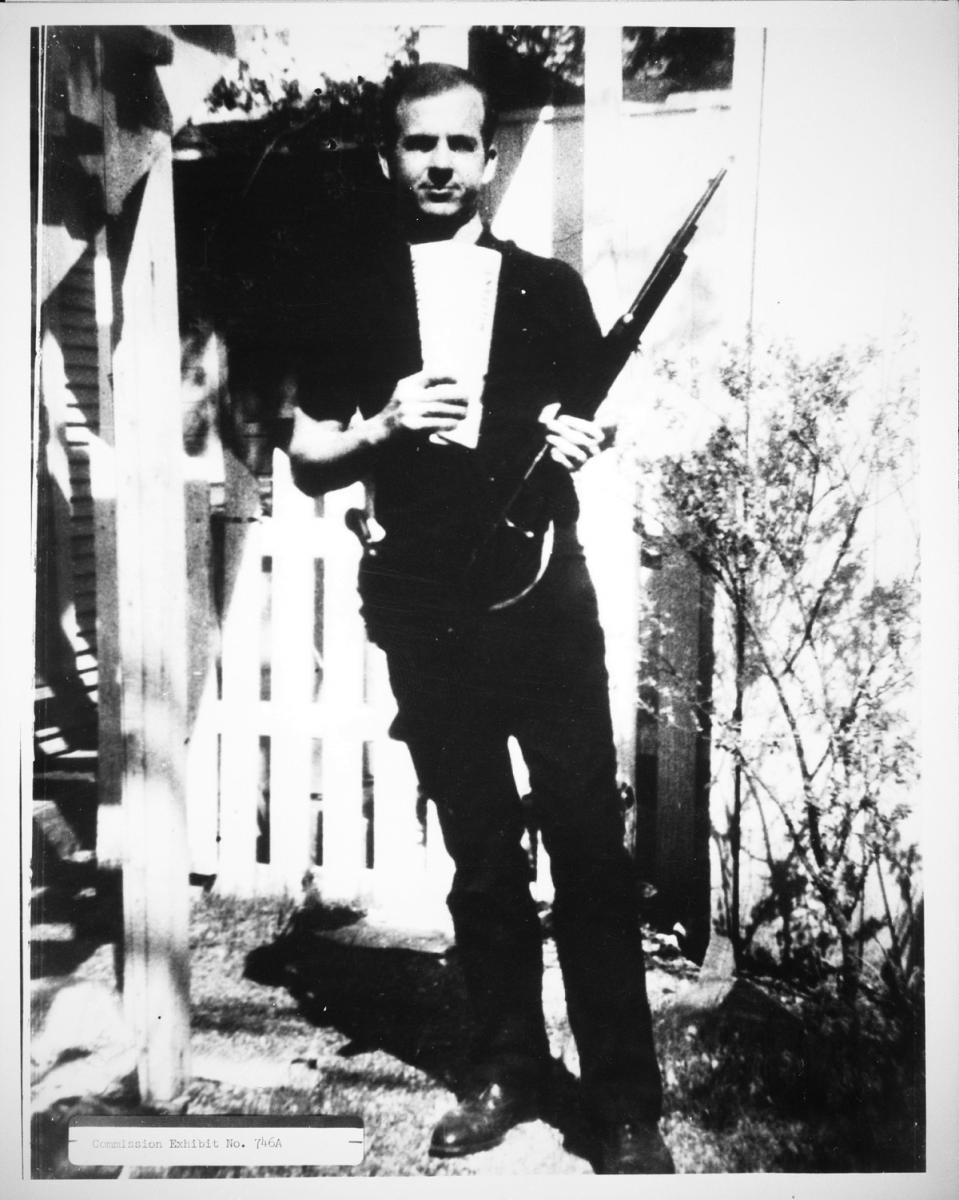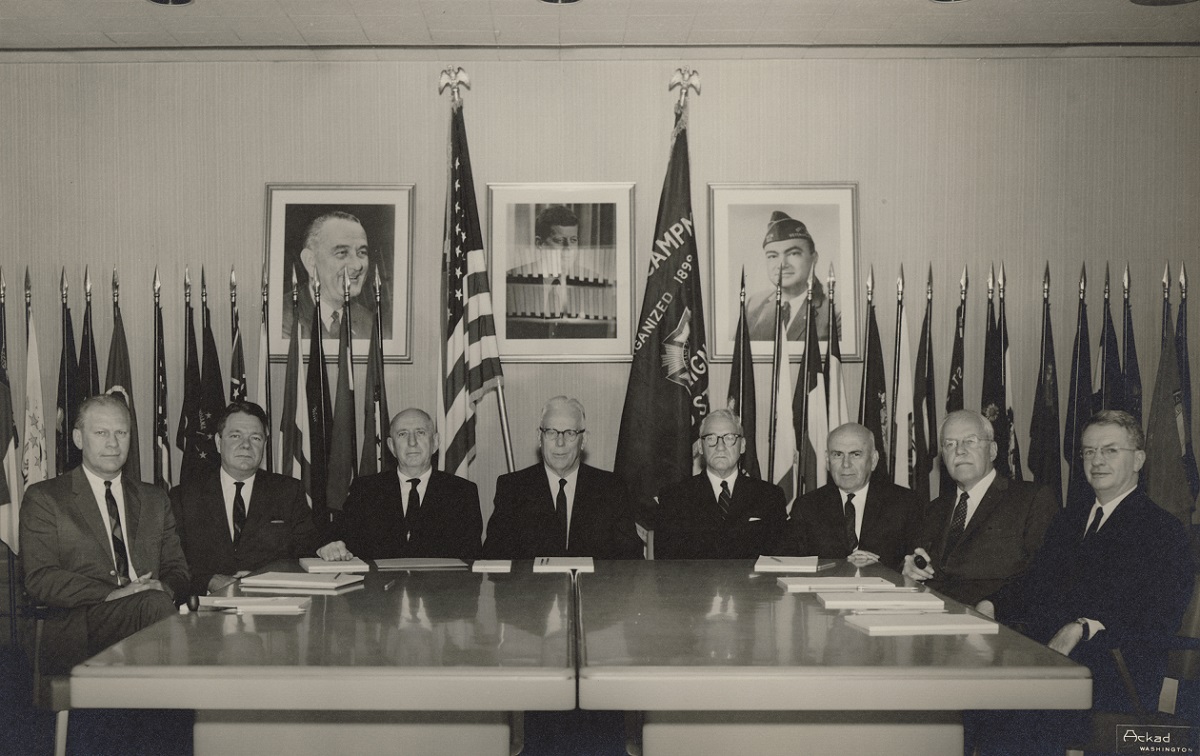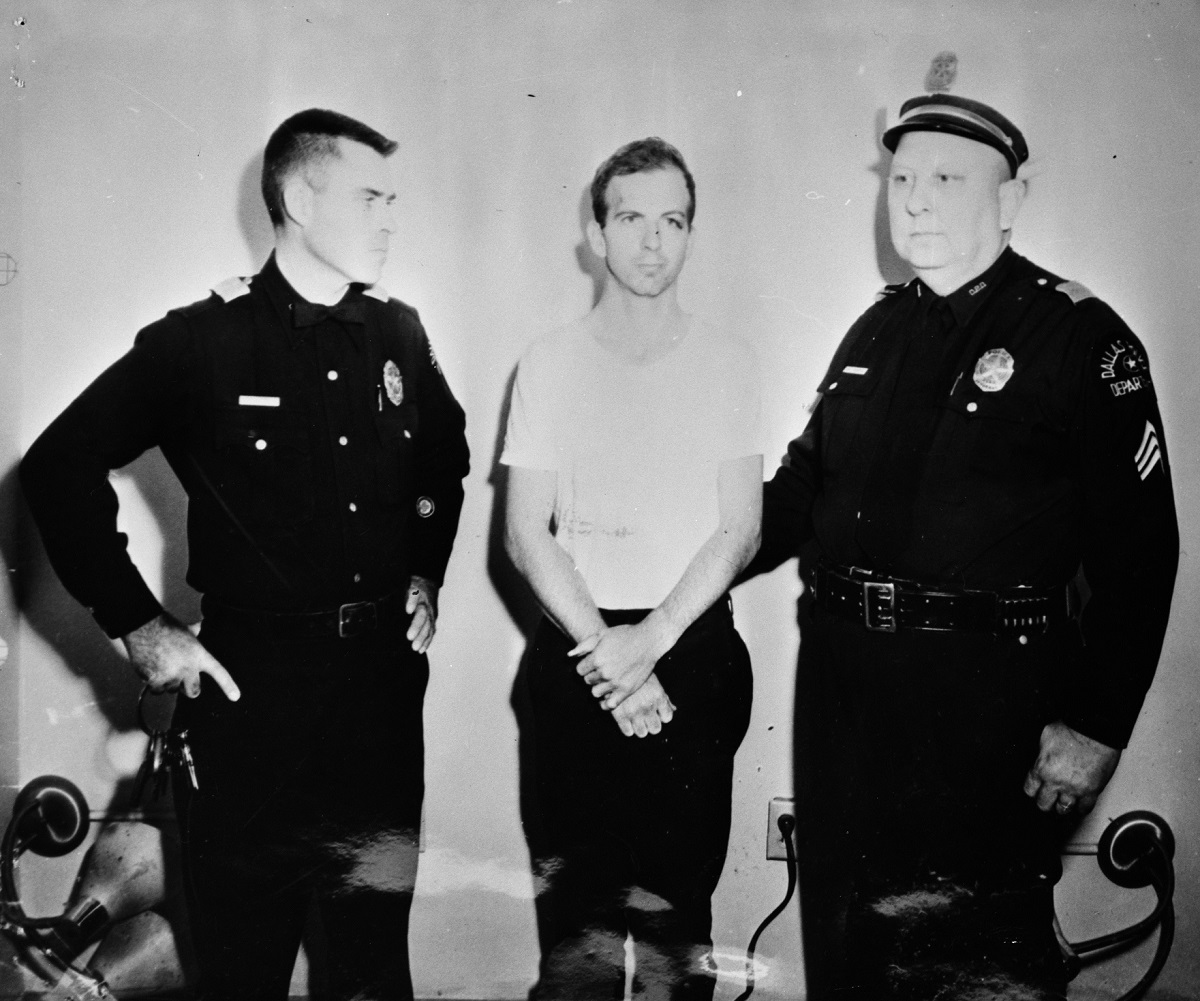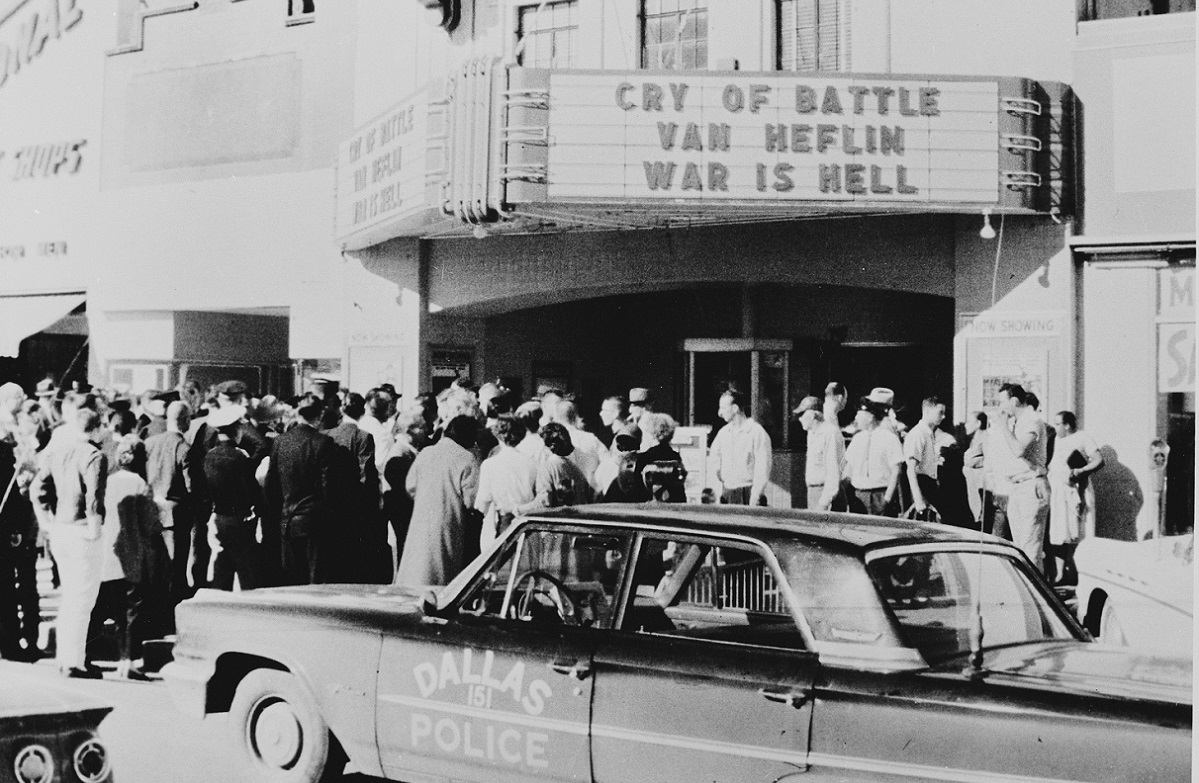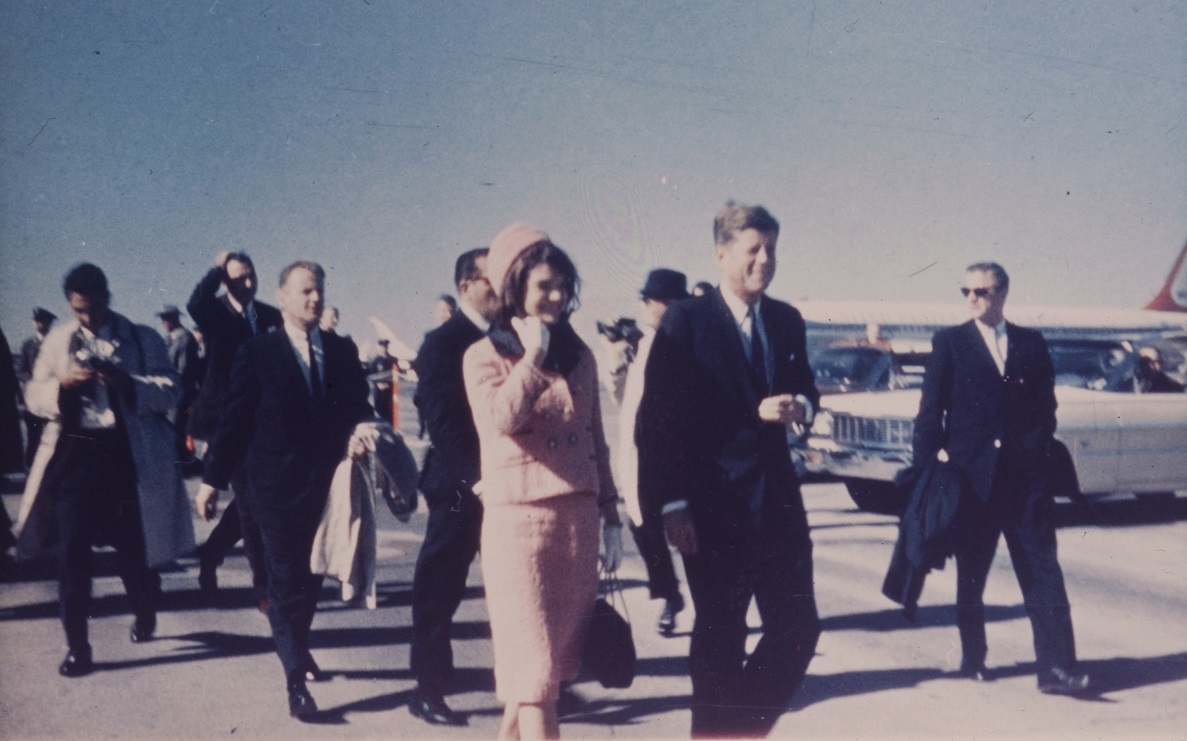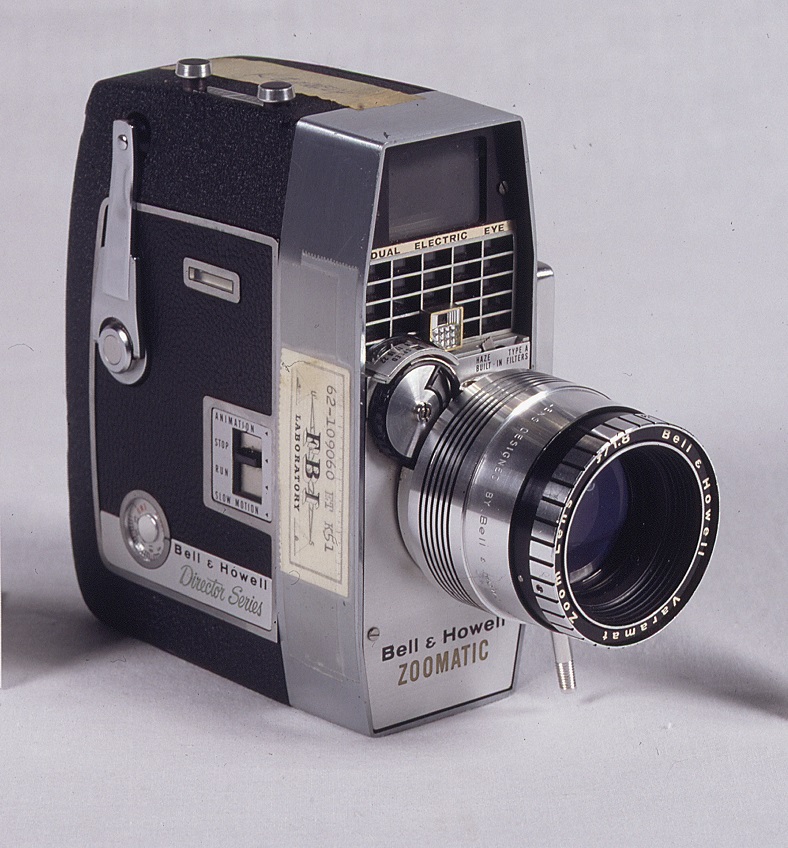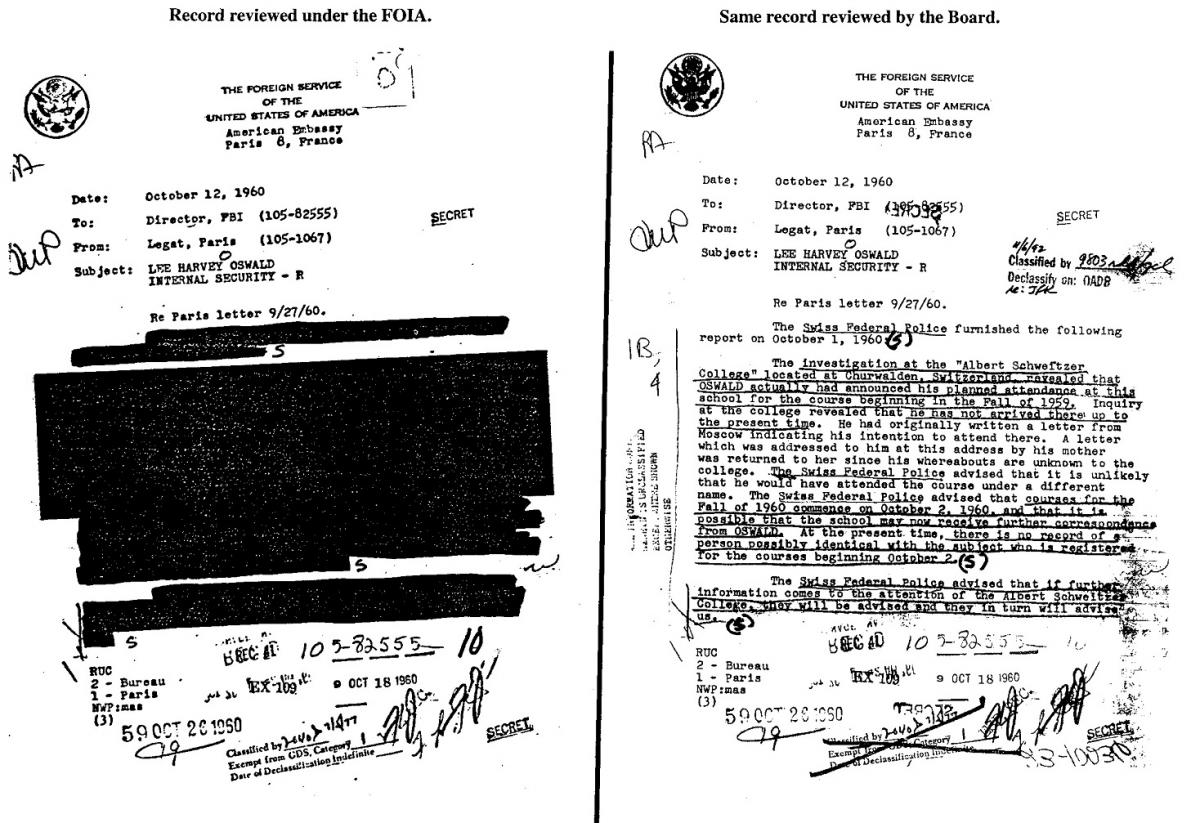
Documenting the Death of a President
The John F. Kennedy Assassination Records Collection
Español
Fall 2017, Vol. 49, No. 3
By James Mathis and Martha Wagner Murphy
No other event of the last 75 years has continued to captivate the American people as much as the assassination of President John F. Kennedy on November 22, 1963, in Dallas.
More books and articles have been written about the shooting than any other single event in the history of the country. Numerous motion pictures and television documentaries have recounted that day or used it as a backdrop for another story line.
And conspiracy theories continue to abound as the number of Americans who were alive in 1963 dwindles and later generations express questions about the Warren Commission’s findings.
The official records of the killing, the fourth assassination of a U.S. President, have long since been transferred to the National Archives, which, under a 1992 law, created the John F. Kennedy Assassination Records Collection as a repository for records released through a review process designed to speed their release by October 26, 2017.
In accordance with that law, the Archives is to make public by that date the final installment of assassination-related records that it holds unless the incumbent President authorizes further withholding.
The story of the assassination on that day in Dallas is one in which the National Archives, as the repository of the permanently valuable records of the federal government, has had a role in writing.
Researchers Use FOIA to Access Records
The National Archives took custody of the Warren Commission’s records on November 23, 1964, and established them as Record Group 272. Most of the records were available to the public soon after their accessioning. Through periodic reviews and researcher requests through the Freedom of Information Act (FOIA), by the early 1990s, only 2 percent of the commission’s records remained withheld in full or in part. The records of the Warren Commission, along with some smaller series, were the only records relating to the assassination regularly available to the public.
Other records concerning the assassination remained in the custody of different agencies of the executive branch, in particular the Federal Bureau of Investigation and the Central Intelligence Agency. Using FOIA, assassination researchers requested access to records compiled by the FBI as part of their investigations of the assassination, and thousands of pages of additional records were released during the 1970s and 1980s.
FOIA, however, proved to be an imperfect instrument in attempts to gain more information about the assassination. Researchers would receive documents with substantial portions blacked out. In addition, the records of the House Select Committee on Assassinations (HSCA), the Church Committee, and the Rockefeller Commission, which had each investigated aspects of the assassination, remained closed to the public because they were outside FOIA’s jurisdiction.
Oliver Stone’s 1991 movie JFK brought the issue of access to records on the assassination into the public eye. Stone’s insertion at the end of the movie of a title card stating that the HSCA records were closed until 2029 drew particular attention. Calls began for the government to release more records concerning the assassination and its background.
In response, legislation was introduced in Congress in early 1992 to create a review process that was outside of FOIA and specifically designed to speed the release of assassination records. President George H.W. Bush signed the bill on October 26, 1992, and it became Public Law 102-526, the President John F. Kennedy Assassination Records Collection Act of 1992 (the JFK Act).
Repository, Review Board Created in 1992 Legislation
In its final form, the JFK Act stated that all records concerning the assassination would “carry a presumption of immediate disclosure.” To achieve this goal, the act created two related entities: the John F. Kennedy Assassination Records Collection (JFK Collection) and the Assassination Records Review Board (ARRB).
The JFK Collection, under the supervision of the National Archives and Records Administration, would serve as a central repository for all records of the assassination of President Kennedy. The act directed government agencies to search their files to identify, review, process, and transfer to the National Archives all assassination records in their custody. The Archives was to create and give to agencies a standard finding aid that they would use as they reviewed each assassination record. Before transmitting a record to the collection, agencies would attach a copy of the identification record to the record it described. Each document in the collection would thus be identifiable down to the item level, giving researchers the ability to look for individual documents on the same subject across records from different agencies.
The act gave the National Archives 45 days from the date of enactment to develop and share this finding aid system with agencies and 60 days to establish the collection; agencies had 300 days to begin to transmit records to the collection. Once the Archives received a document, it had 30 days to make it available to the public.
At its beginning, the core of the collection consisted of the records that had been open to the public before 1992, primarily the records of the Warren Commission in Record Group 272, along with other smaller series.
The electronic finding aid created by the National Archives, the John F. Kennedy Assassination Records Collection Records System (JFK Database), allowed agencies to capture metadata on each document (from, to, date, title, etc.), assign brief subject tags, and display review information (classification, review date, status, exemptions). The JFK Database still is the primary finding aid for the collection.
Task Force Created to Assemble All Records
Beginning in January 1993, the National Archives worked on several fronts to fulfill its obligations. Archival staff began indexing Warren Commission records that remained withheld. To oversee the collection, and work with the still-unnamed members of the board, the Archives established the JFK Task Force in May 1993. Steven Tilley, then at the National Security Council but formerly of the National Archives, was named its director.
The task force took over the job of indexing documents in Archives custody as well as searching the accessioned holdings of the National Archives and Records Administration’s own records for documents relating to the assassination. The Center for Legislative Archives began to index the JFK investigation records of the HSCA, and the presidential libraries and regional archives looked in their holdings for records to transfer to the collection. Finally, the Archives worked with agencies to coordinate the transmittal and receipt of metadata, answer questions concerning searches for records (particularly those at a Federal Records Center), and arrange for accessioning records into the collection.
The collection began to receive records from other agencies, and in late August, the CIA transferred the most significant addition to the body of publicly available records up to that point—50 boxes of the Personality File on Lee Harvey Oswald, referred to as the Oswald 201 file. These records along with others were made available to the public on August 23, 1993. The FBI also began to transfer its investigative case files on Oswald, Jack Ruby, and the assassination itself.
All of this activity occurred before the Assassination Records Review Board was formally established. The board was an independent agency composed of five members and a staff with the responsibility of overseeing agency searches for assassination records. Among its other powers, the board had the final authority (subject to the President) to approve or reject agency proposals for withholding information. It was this power that the architects of the act hoped would result in more information being released than had been under the Freedom of Information Act.
Review Board Represents NARA Stakeholders, Users
Under the JFK Act, the President would choose from persons recommended by the American Historical Association, the Organization of American Historians, the Society of American Archivists, and the American Bar Association plus one of his own choosing. Outgoing President Bush left the selection of the board to his successor, Bill Clinton, and he forwarded five names on September 3, 1993, to the U.S. Senate for confirmation: John R. Tunheim, U.S. district court judge, District of Minnesota; Henry F. Graff, professor emeritus of history, Columbia University; Kermit L. Hall, executive dean of the Colleges of the Arts and Sciences, dean of the College of Humanities, and professor of history and law at the Ohio State University; William L. Joyce, associate university librarian for rare books and special collections at Princeton University; and Anna K. Nelson, distinguished adjunct historian in residence at the American University.
The Senate confirmed the nominees, and the new board members were sworn in on April 11, 1994—18 months after the passage of the act. Because of the delay in setting up the board, in late 1994 Congress extended the board’s life to September 30, 1997; in 1997 this was extended by a further year, to September 30, 1998.
One of the first tasks the board set itself, in addition to hiring the necessary staff, was further defining what an assassination record was. The act had defined an assassination record as a record “related to the assassination of President John F. Kennedy, that was created or made available for use by, obtained by, or otherwise came into possession of” the government. These included the records of all previous investigations (including the Warren Commission and the HSCA), the Rockefeller Commission, the Pike Commission, the National Archives, and any agency in the executive branch.
Beyond this, the act left to the board the task of refining the definition. Members drew on input from a number of sources, including an October 1994 public hearing, to define the scope of an assassination record and published the final definition of an assassination record in the Federal Register on June 28, 1995.
“An assassination record, the board decided,
[included], but is not limited to, all records, public and private, regardless of how labeled or identified, that document, describe, report on, analyze, or interpret activities, persons, or events as reasonably related to the assassination of President John F. Kennedy and investigations or inquiries into the assassination.”
The board included in its definition those records identified in the act as well as all records created or identified by previous investigations into the assassination. Additionally, the board identified as assassination records any records that would assist in the identification of or interpretation of other records, such as internal manuals or organizational charts. Finally, the board included records that fell outside the major category of assassination record “but which has the potential to enhance, enrich, and broaden the historical record of the assassination.”
With this, the board pushed beyond simply seeing that all records relating to previous investigations were open as fully as possible into seeking records that would allow evaluation of how domestic and international affairs affected those investigations.
Board Streamlines Review Process
Having formulated its definition of an assassination record, the board began work in earnest. In their early meetings in 1995, board members looked at each document proposed for postponement, either in full or in part, along with agency justification for postponement. The members then voted on each document—whether to accept the agency’s proposed decision or request more information.
As the board became more familiar with the types of information agencies sought protection for, they developed standards for review, referred to as the board’s “common law.” With the number of documents being submitted by agencies growing exponentially through 1995 and 1996, the board staff took over the actual work of reviewing the documents. By late 1996 and early 1997, the board only took up specific documents when either a new issue arose or the staff recommended rejecting an agency’s postponement decisions. By 1997, the agencies themselves were using previous board decisions to make “consent releases” of documents.
In addition to reviewing agency decisions on documents, board staff worked with agencies on searching their files for additional assassination records to include in the JFK Collection.
The records sought were of two types.
The first type were any records that would flesh out the story of the assassination itself or shed more light on the major figures of the assassination. For example, the board sought additional records on Oswald. These efforts uncovered an extensive Immigration and Naturalization Service working file on Marina Oswald and Oswald’s original Marine Corps Enlisted Personnel File, to name two. The board also sought and received from the CIA information concerning its station in Mexico City for September–October 1963, when Oswald visited the Cuban and Soviet embassies. The board obtained previously unreleased details of CIA’s technical surveillance of the embassies and files on Winston Scott, CIA chief of station. It also deposed Anne Goodpasture, who worked at the Mexico City station for many years and provided information concerning the day-to-day operations of the station.
The second type of records were those that improved the understanding of the historical context of the assassination. Records concerning U.S. policy on Vietnam and Cuba were of particular interest. The files of the Joint Chiefs of Staff, the Secretary of the Army, and the Office of the Secretary of Defense, along with additional files from the CIA, yielded important documents on these two subjects that were identified for inclusion in the JFK Collection.
The board also sought and received records of senior agency officials that documented their involvement in the assassination investigation; information on anti-Castro Cubans; additional records on organized crime; information on specific individuals who had been of interest to the Warren Commission or the HSCA, or who had been mentioned in one of the many conspiracy theories; and files concerning Warren Commission staffers and critics.
Because of the board’s work, the JFK Collection is not only important for researchers of the assassination but a valuable source for researchers interested in different aspects of early 1960s Cold War America.
The Board Seeks to Clarify the Record
In addition to locating and reviewing agency records, the board sought to clarify the record on several controversial topics surrounding the assassination. The board, with the cooperation of the Eastman Kodak Company, the National Archives, the FBI, and the Kennedy family, was able to digitize photographs taken during the autopsy of President Kennedy.
The board asked Eastman Kodak to examine the in-camera original and first-generation copies of the Zapruder film as well to digitize and enhance the film. Retired Kodak employee Roland Zaveda conducted a thorough examination of the film and wrote an extensive report that is part of the JFK Collection in the records of the board.
Finally, the board worked with the Justice Department and the FBI to arrange additional testing of the nose of a bullet found in the Presidential limousine (Warren Commission Exhibit 567 [CE 567]) to determine if it contained textile fibers—testing originally recommended by the HSCA but never carried out. Testing began in September 1998, and the National Archives issued the final report in January 2000. The analysis proved conclusively that the fragment contained no textile fibers from either President Kennedy’s or Governor John Connally’s clothing; it did show, however, that the fragment contained human skin and tissue.
88 Percent of Documents in JFK Collection Released
The board formally went out of business on September 30, 1998. By the time it had ended its work, it had fulfilled the major goals of the JFK Act. The board voted on releases of more than 29,000 documents with some form of postponement and approved the consent releases of over 33,000 others.
In all, the JFK Collection consists of more than 5 million pages, and the JFK Database contains information on more than 319,000 individual documents. Eighty-eight percent of the documents in the collection are now open in full; 11 percent are open with portions withheld by the board under one of the JFK Act exemptions; and only 1 percent were withheld in full by the board.
Because of the board’s insistence that the JFK Act exemptions be applied as narrowly as possible, released documents had much less information withheld than would have been under the FOIA. Indeed, most of the 1 percent withheld in full had been declared by the board to be “not assassination related,” or “not believed relevant.”
During the board’s tenure, the JFK Task Force worked with agencies on the JFK Database to accession their released records into the collection. As the collection grew, the Archives managed a steady flow of researchers that attested to continued public interest in the assassination.
NARA Takes Over Review Board’s Duties
At the end of the board’s tenure, there were several outstanding issues. While the board had made decisions on all FBI and CIA documents, hundreds of documents still needed processing; data needed to be updated for the database; and documents remained to be interfiled. The National Archives assumed responsibility for overseeing the remaining work, and through 1999 and early 2000, the Archives received and interfiled the documents from agencies. The Archives also received the originals of postponed documents as required by law and housed them in the JFK Protected Collection, physically separated from the open collection. The records of the review board itself became part of the collection as Record Group 541.
Once these records were received and interfiled, the contents of the JFK Collection was relatively stable. Some records continued to be interfiled as a backlog of formerly withheld documents from the Warren Commission records was processed, along with smaller bodies of documents from other series in our holdings. Over the last 20 years, we have added a small body of donated papers, including the personal files of two former Warren Commission staff members.
On its own initiative, the CIA reviewed all documents with dates of release up through 2010, and the agency sent them to the National Archives in 2005. In many cases, documents that had been redacted were now released in full; in others, some redactions were removed, releasing more information.
The next major change to the collection is scheduled for late 2017. According to the act, all records previously withheld either in part or in full should be released by October 26, 2017, unless authorized for further withholding by the President. Since October 2014, a team of archivists and technicians has been processing and digitizing the withheld records.
The Archives has completed archival processing, scanned the records, and notified agencies that previously withheld documents will be released in 2017 unless there is a successful appeal to the President. Once the digital release is completed, the hard-copy documents will be interfiled into the 5 million pages of the paper collection.
At the end of this process, it is hoped that most of the remaining records identified by the review board for inclusion in the collection will be available in full to the public, shedding further light on the events surrounding President Kennedy’s assassination and the historical context of those events. The National Archives will continue to make these records available, as it has since accessioning the original Warren Commission records.
James Mathis is a supervisory archivist with the Special Access and FOIA Staff. Since 2014 he has been the Project Lead for the JFK2017 Project.
Martha Wagner Murphy is program manager for access policy for the JFK Assassination Records Collection. She has been with the National Archives and Records Administration since 1991 and is a member of NARA’s FOIA Council as well as the American Society of Access Professionals.
